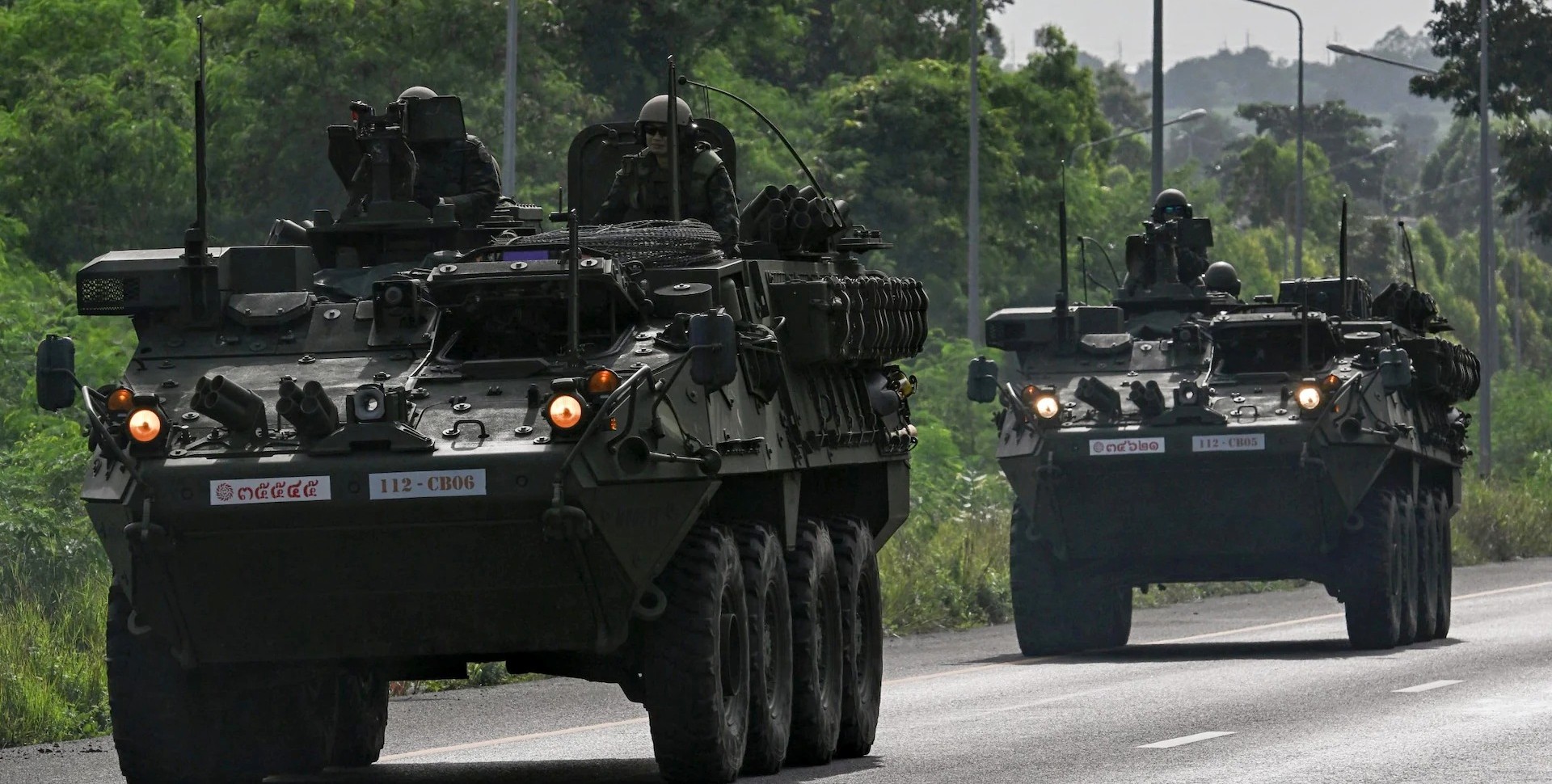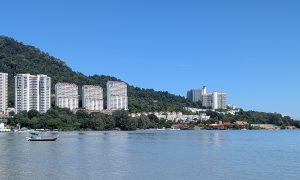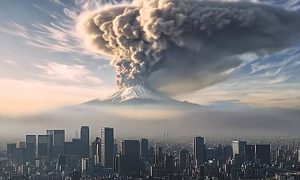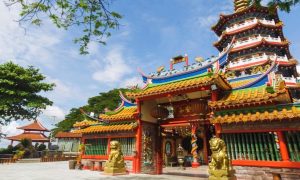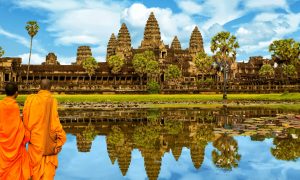A deadly flare-up along the disputed border between Cambodia and Thailand has claimed civilian lives, sparked aerial bombings, and triggered a diplomatic rupture, reigniting a long-dormant dispute with ancient roots and modern political implications.
In the simmering heat of Southeast Asia’s July dry season, tensions once again boiled over between Cambodia and Thailand, two neighbours whose border disputes have been periodically reignited by politics, nationalism, and ancient claims. What began as a skirmish near a centuries-old temple site escalated into the most serious clash in over a decade, killing at least a dozen people, drawing in fighter jets, and prompting a full-blown diplomatic breakdown.

FIGHTING RETURNS TO AN OLD FAULT LINE
Thursday morning’s violence was fierce and fast. Reports indicated that armed clashes erupted along multiple points of the 800-kilometre land border between the two countries, particularly around the contested Ta Moan Thom temple area. Both sides accused the other of initiating the violence, with Thailand asserting Cambodian troops fired first and Cambodia charging that Thai forces opened fire preemptively.
The violence quickly spiralled. Thailand reported Cambodian BM-21 rocket attacks in Surin province and a deadly strike on a petrol station in Kantharalak that killed six civilians. A total of 12 Thai nationals, including an 8-year-old boy and one soldier, were killed, according to the Thai Ministry of Public Health. Cambodia has yet to confirm fatalities on its side but reported damage in Preah Vihear province and accused Thailand of deploying fighter jets to drop bombs near the historic Preah Vihear temple – a UNESCO World Heritage Site.
“It was terrifying,” said Komsan Jaipeng, a motorcycle shop owner in Surin who described scenes of schoolchildren running for shelter. “I told my wife that we are not going home tonight. I hope this ends quickly.”
Across the border, farmer Chhan Rorn Yon from Sa Em village said many of his neighbours fled to nearby pagodas for safety, though he chose to remain. “I don’t want to experience this. I’m extremely concerned… especially for the troops who fight.”

A HISTORY WRITTEN IN STONE AND BLOOD
The long-standing dispute centres on differing interpretations of colonial-era maps. The French, who once ruled Cambodia, drew maps that placed the 11th-century Preah Vihear temple within Cambodian territory. In 1962, the International Court of Justice (ICJ) agreed. Thailand reluctantly withdrew from the temple itself, but claimed ownership of the surrounding land – a position it maintains to this day.
Tensions reignited in 2008 when Cambodia sought UNESCO recognition for Preah Vihear, leading to a series of skirmishes and another ICJ case in 2011, which reaffirmed Cambodia’s rights to the temple but left parts of the border undefined. Thailand subsequently rejected the court’s broader jurisdiction.
As Phil Robertson, director of Asia Human Rights and Labour Advocates, put it: “Neither side wants to be seen giving away an inch of territory. It’s like political suicide.”

MILITARY ESCALATION AND CIVILIAN COSTS
Thursday’s fighting marked the most significant escalation in years. According to Thai military officials, the conflict began early in the morning after a drone was spotted near the Ta Moan Thom temple, followed by armed Cambodian troops crossing into disputed territory.
In response to the attacks, Thailand launched air strikes, deploying F-16 jets to hit what it described as military targets in Cambodian territory. Cambodia, meanwhile, labelled the air strikes “brutal, barbaric, and violent military aggression,” and warned it would respond decisively.
The Cambodian Defence Ministry confirmed that two bombs were dropped near the access road to Preah Vihear and accused Thailand of violating international law. “The armed forces are fully prepared to defend the kingdom’s sovereignty and its people – whatever the cost,” the statement read.
Residents on both sides of the border fled or sheltered in place. Video footage showed civilians hiding in bunkers amid the sound of gunfire, damaged homes, and thick plumes of smoke rising from fuel stations and stores.

DIPLOMACY UNRAVELS
The conflict quickly spilled over into the diplomatic arena. Thailand expelled the Cambodian ambassador and recalled its envoy from Phnom Penh. Cambodia responded in kind, downgrading diplomatic relations to their lowest level and banning Thai imports including fuel, fruits, and vegetables. Thai entertainment programming was also yanked off Cambodian airwaves, while some cross-border internet and power connections were suspended.
Cambodian Prime Minister Hun Manet, son of long-serving former leader Hun Sen, called on the United Nations Security Council to intervene and demanded an emergency meeting “to stop Thailand’s aggression.”
China, a major partner to both countries, expressed concern and urged dialogue, stating it would play a “constructive role” in de-escalating the situation. ASEAN, the regional bloc to which both Thailand and Cambodia belong, has so far remained largely silent, but analysts suggest quiet backchannel diplomacy may already be underway.
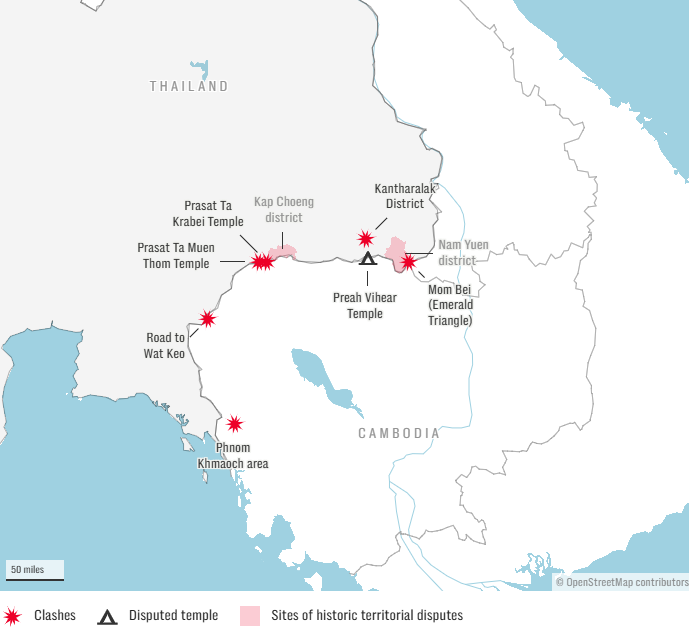
POLITICS AT PLAY ON BOTH SIDES
The timing and nature of the conflict suggest political motivations are not far beneath the surface. Thailand’s Prime Minister Paetongtarn Shinawatra, already under pressure, was suspended earlier this month following a leaked phone call in which she appeared to criticise her own military while speaking with Hun Sen. The call, perceived by many as overly deferential, ignited nationalist backlash and exposed rifts within Thailand’s ruling circles.
Analysts believe the Thai government is now wary of appearing weak. “With Thai soldiers wounded by Cambodian landmines and now with civilian deaths, pressure on Thai leaders is mounting,” said Tita Sanglee, an associate fellow at the ISEAS–Yusof Ishak Institute in Singapore.
Cambodia, too, has domestic considerations. Hun Sen remains an influential figure, but his son Hun Manet has struggled to assert himself. Some speculate the government is using the crisis to boost his credentials as a wartime leader – a tactic not unfamiliar in the region.
“This conflict may also be a distraction from Cambodia’s struggling economy,” Robertson added. “I think Hun Sen is whipping it up to create an atmosphere where his son can shine.”

A PATH FORWARD – OR A TIGHTROPE
Despite the fierce rhetoric and casualties, many experts still believe a protracted war is unlikely. Past conflicts along the same border have typically ended after brief but bloody episodes. However, they nevertheless warn that the current situation is volatile and could spiral further out of control.
“There’s a lot of pent-up tension on both sides,” said Thai political scientist Thitinan Pongsudhirak. “Each side feels it has something to prove – politically, nationally, even personally.”
Will ASEAN – so often a toothless tiger – step in and mediate? Or will the group stand by, as it has largely done with multiple crises in Myanmar? Without a neutral mediator or a forceful regional temperance, a lasting solution will likely remain elusive. Until then, communities along the border will continue to bear the brunt of a conflict that, once again, has turned heritage into a battlefield.



